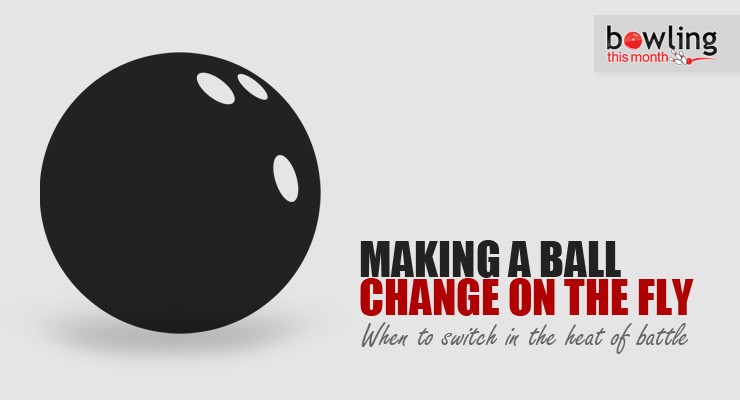Many modern bowlers use ball changes as an adjustment to changing lane conditions. Very few do it effectively. Let’s take a look at what makes this strategy work and what prevents it from working.
The successful ball change comes as a result of careful planning of the arsenal for a particular league or tournament. Experience in a bowling center, particularly in a league that bowls at the same time each week, should allow you to narrow down the range of balls you may need any given week. If, for instance, you bowl on a 38 foot house pattern, you probably won’t need an early rolling aggressive ball with a lot of surface. If, on the other hand, you bowl on a 40 foot pattern of fresh oil each week, you can probably leave the urethane ball for burned up lanes at home.
The first thing to do in order to set up an effective arsenal for league is think about the highest sets you’ve bowled in the league and look for commonalities among the balls you used when you bowled them. Look at the RG and, if you are a high rev player, the differentials. Do you see any patterns? Next, think about the surfaces. Were all of the high sets bowled with balls with polish or with a lot of surface?
If you see that your high sets were all thrown with balls with a medium to high RG, then narrow the range of balls you take with you to that league to those with an RG between 2.50 to 2.58. If the high sets were all thrown with polished equipment, then limit your arsenal for that league to polished equipment. In the long run, having a four ball arsenal that includes a spare ball and three strike ball options that are in a narrower range will do you a lot more good than lugging around a low RG ball with a dull surface just in case the oil machine malfunctioned that day. Obviously, before you can do this, you must have the numbers (RG, differential, etc.) for all of your bowling balls.
If you are bowling in a tournament or in a sport league, it is imperative that you find out as much as you can about the oil pattern being used and plan your arsenal accordingly. I can’t tell you how many times I’ve heard bowlers arrive ...
This article is only available to Bowling This Month subscribers. Click below to get instant access to this article and all of our other premium instructional content.
Subscribe to Bowling This Month
Already a Bowling This Month subscriber? Click here to log in.
